Need Help?
3 August 2023
Viruses | Invitation to Read Selected Papers from Editor’s Choice Articles

We are excited to present the latest edition of the Editor’s Choice Articles, where we shine a spotlight on exceptional research published in Viruses (ISSN: 1999-4915). As passionate advocates of scientific excellence, our team of scientific editors has carefully curated a selection of high-quality articles covering diverse topics in the virology community.
In this edition, you will find an array of fascinating studies exploring Baculovirus, HIV, Flavivirus, Rodent-Borne Viruses, Avian Influenza Viruses, Phage, Lyssavirus, Coronaviruses, SARS-CoV, Papillomavirus, and much more. To provide you with a glimpse into the essence of each research endeavor, every article is accompanied by a graphical abstract and a succinct summary.
Our Editor's Choice Articles not only celebrate groundbreaking discoveries, but also foster engagement within the scientific community. We look forward to your insights and feedback, as they are paramount to advancing our collective understanding of virology.
Dive into the latest advancements in virology research and join us in exploring the frontiers of science.
“Global Metabolic Profiling of Baculovirus Infection in Silkworm Hemolymph Shows the Importance of Amino-Acid Metabolism”
by Min Feng, Shigang Fei, Junming Xia, Mengmeng Zhang, Hongyun Wu, Luc Swevers and Jingchen Sun
Viruses 2021, 13(5), 841; https://doi.org/10.3390/v13050841
Available online: https://www.mdpi.com/1999-4915/13/5/841
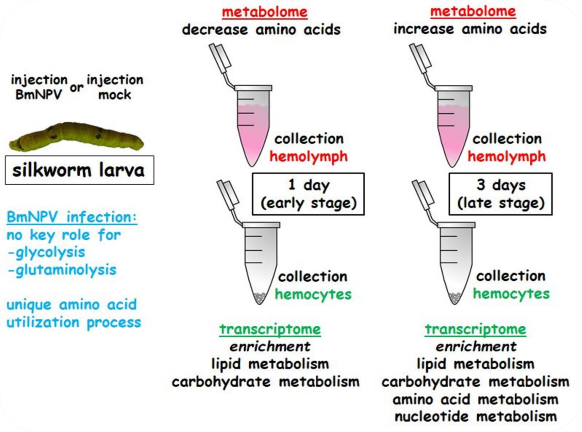
Message from the Editor:
In this study, global metabolic changes associated with BmNPV infection in silkworm hemolymphs were analyzed to understand the interaction between the host metabolic responses and BmNPV infection. The results revealed a unique amino acid utilization process that was implemented during BmNPV infection, in which amino acid consumption was increased at 24 hours post infection, but its abundance recovered at 72 hours post infection. Furthermore, it was found that glycolysis and glutaminolysis are not essential during BmNPV infection.
“Microglial HIV-1 Expression: Role in HIV-1 Associated Neurocognitive Disorders”
by Hailong Li, Kristen A. McLaurin, Jessica M. Illenberger, Charles F. Mactutus and Rosemarie M. Booze
Viruses 2021, 13(5), 924; https://doi.org/10.3390/v13050924
Available online: https://www.mdpi.com/1999-4915/13/5/924

Message from the Editor:
In this study, two complementary studies were conducted to (1) evaluate the HIV-1 mRNA distribution pattern and major cell type expressing HIV-1 mRNA in HIV-1 transgenic (Tg) rats, and (2) validate our findings by developing and critically testing a novel biological system to model active HIV-1 infection in rats. The results showed that microglia were the predominant cell type expressing HIV-1 mRNA in the HIV-1 Tg rats. Within eight weeks of infection, EcoHIV rats exhibited neurocognitive impairments and synaptic dysfunction, which may have resulted from the activation of the NogoA-NgR3/PirB-RhoA signaling pathway and/or neuroinflammation.
“An Absolutely Conserved Tryptophan in the Stem of the Envelope Protein E of Flaviviruses Is Essential for the Formation of Stable Particles”
by Iris Medits, Franz X. Heinz and Karin Stiasny
Viruses 2021, 13(9), 1727; https://doi.org/10.3390/v13091727
Available online: https://www.mdpi.com/1999-4915/13/9/1727
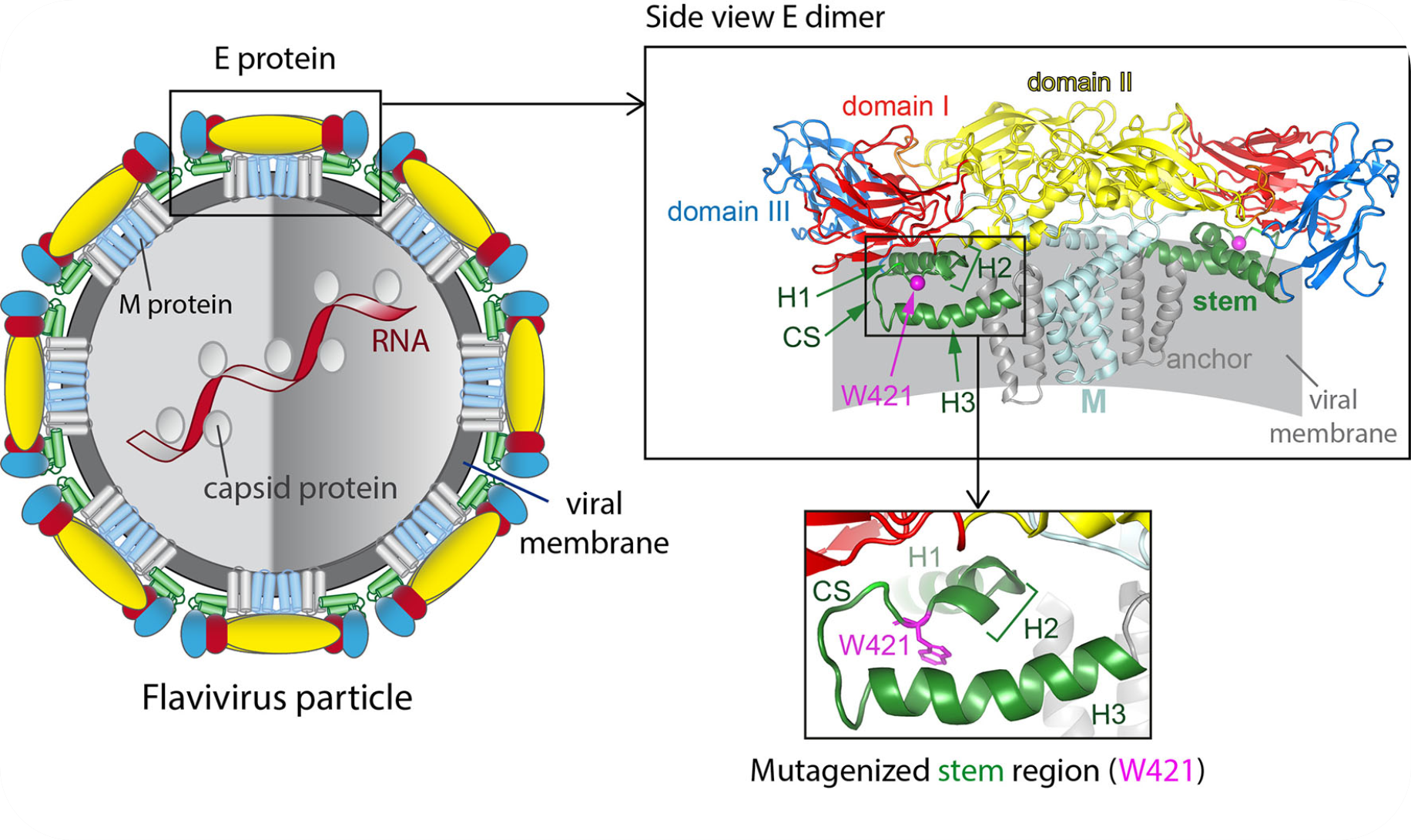
Message from the Editor:
Medits, Heinz, and Stiasny (2021) investigated the importance of tryptophan in different stages of the viral life cycle via a mutagenesis-based approach using tick-borne encephalitis virus (TBEV). The study shows that W421 does not play an important role in viral fusion-related processes, but is essential for virus assembly by establishing interactions that confer stability to infectious mature particles. As revealed by a resuscitating mutation in passaged virus mutants, these stabilizing interactions could also be provided by another large hydrophobic amino acid (leucine) at the same position.
“Phylogenomic Characterization of Lopma Virus and Praja Virus, Two Novel Rodent-Borne Arteriviruses”
by Bert Vanmechelen, Zafeiro Zisi, Sophie Gryseels, Joëlle Goüy de Bellocq, Bram Vrancken, Philippe Lemey, Piet Maes and Magda Bletsa
Viruses 2021, 13(9), 1842; https://doi.org/10.3390/v13091842
Available online: https://www.mdpi.com/1999-4915/13/9/1842
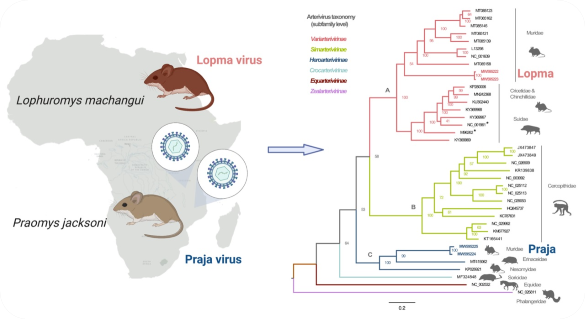
Message from the Editor:
The complete genome sequences of four new arterivirus variants belonging to two putative novel species were reported in this study. These new arteriviruses were discovered in African rodents and were given the names Lopma virus and Praja virus. Phylogenetic analysis shows that Lopma virus clusters in the subfamily Variarterivirinae, while Praja virus clusters near members of the subfamily Heroarterivirinae: the yet undescribed forest pouched giant rat arterivirus and hedgehog arterivirus 1.
“The Pathobiology of H7N3 Low and High Pathogenicity Avian Influenza Viruses from the United States Outbreak in 2020 Differs between Turkeys and Chickens”
by Miriã F. Criado, Christina M. Leyson, Sungsu Youk, Suzanne DeBlois, Tim Olivier, Mary Lea Killian, Mia L. Torchetti, Darren J. Parris, Erica Spackman, Darrell R. Kapczynski et al.
Viruses 2021, 13(9), 1851; https://doi.org/10.3390/v13091851
Available online: https://www.mdpi.com/1999-4915/13/9/1851
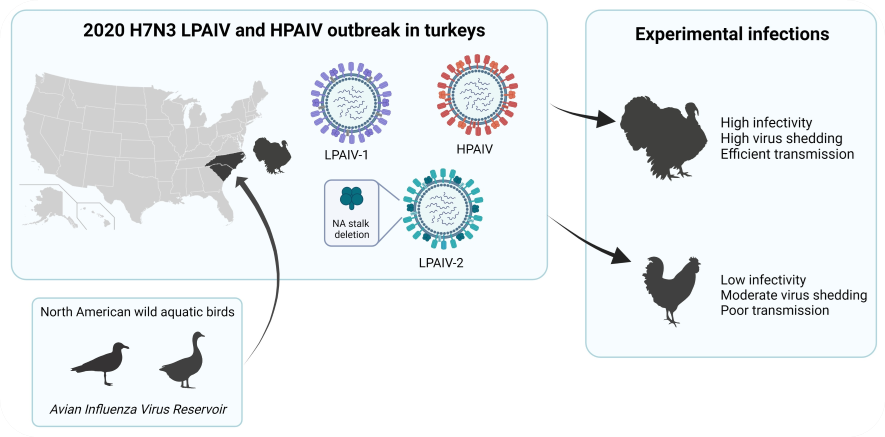
Message from the Editor:
In this study, Criado et al. (2021) reported clear differences in the pathobiology of avian influenza viruses (AIVs) in turkeys and chickens. Results showed that the H7N3 2020 low-pathogenicity avian influenza viruses (LPAIVs) and the high-pathogenicity avian influenza virus (HPAIV) were more infectious in turkeys than in chickens and were efficiently transmitted to contact turkeys but not chickens, corroborating the high susceptibility of turkeys to AIV infections. Other than that, the LPAIV with the NA stalk deletion was found to be more infectious in turkeys, but did not have enhanced infectivity in chickens.
“Reduced Infection Efficiency of Phage NCTC 12673 on Non-Motile Campylobacter jejuni Strains Is Related to Oxidative Stress”
by Jessica C. Sacher, Muhammad Afzal Javed, Clay S. Crippen, James Butcher, Annika Flint, Alain Stintzi and Christine M. Szymanski
Viruses 2021, 13(10), 1955; https://doi.org/10.3390/v13101955
Available online: https://www.mdpi.com/1999-4915/13/10/1955
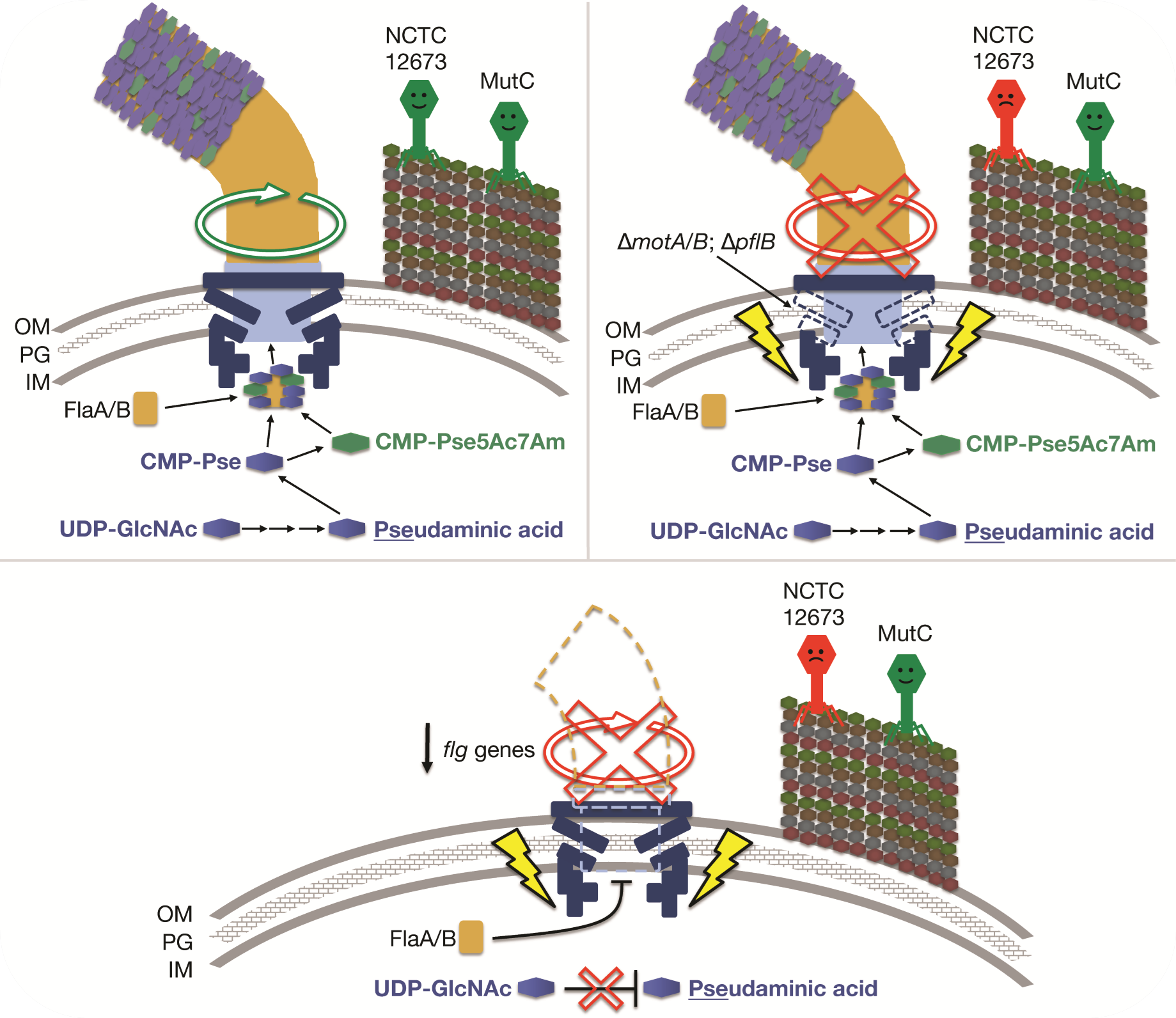
Message from the Editor:
This investigation revealed a complex interplay between phage infectivity, oxidative stress, and flagellar motility in C. jejuni. The results indicated that the apparent dependence of phage NCTC 12673 on C. jejuni motility is not related to adsorption to the flagella, but instead can be explained by the phage’s reduced infection efficiency under conditions of oxidative stress. Moreover, evidence has demonstrated that the phage-encoded FlaGrab is phase-variable, and that variable expression of this protein may be linked to a mechanism by which the phage can tune its infectivity according to the oxidative-stress state of the cell.
“Spillover of West Caucasian Bat Lyssavirus (WCBV) in a Domestic Cat and Westward Expansion in the Palearctic Region”
by Stefania Leopardi, Ettore Barneschi, Giuseppe Manna, Barbara Zecchin, Pamela Priori, Petra Drzewnioková, Francesca Festa, Andrea Lombardo, Fabio Parca, Dino Scaravelli et al.
Viruses 2021, 13(10), 2064; https://doi.org/10.3390/v13102064
Available online: https://www.mdpi.com/1999-4915/13/10/2064
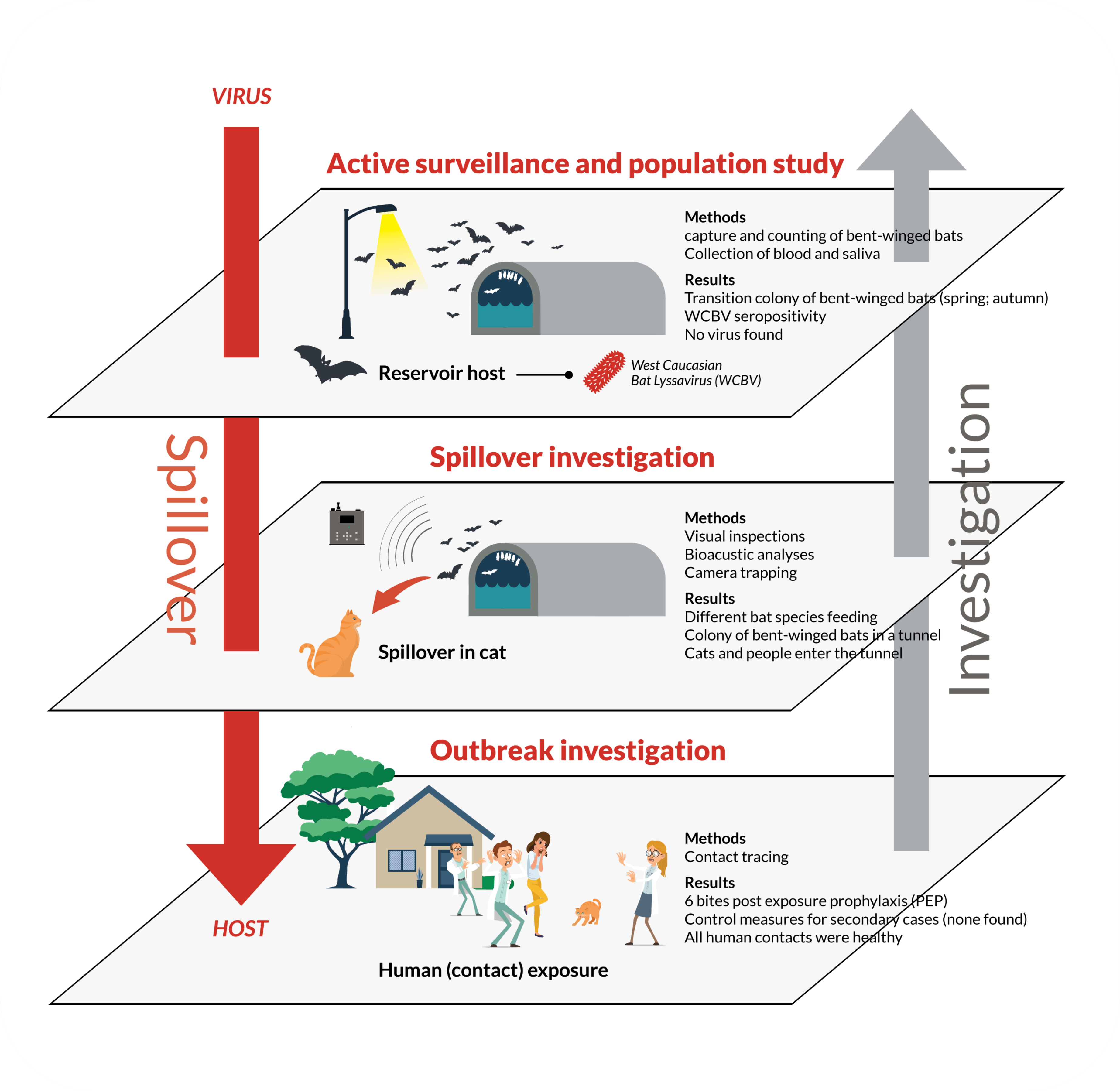
Message from the Editor:
In June 2020, a cat from Arezzo (Italy) that died from a neurological disease was diagnosed with West Caucasian Bat Lyssavirus (WCBV). People that were exposed to the cat received full post-exposure prophylaxis, while animals underwent six months of quarantine. In a tunnel located near the cat’s house, a group of bent-winged bats that had shown virus-neutralizing antibodies to WCVB across four sampling occasions was identified, but no virus was found in salivary swabs.
“Evolution of Anti-RBD IgG Avidity following SARS-CoV-2 Infection”
by Alexandra Tauzin, Gabrielle Gendron-Lepage, Manon Nayrac, Sai Priya Anand, Catherine Bourassa, Halima Medjahed, Guillaume Goyette, Mathieu Dubé, Renée Bazin, Daniel E. Kaufmann et al.
Viruses 2022, 14(3), 532; https://doi.org/10.3390/v14030532
Available online: https://www.mdpi.com/1999-4915/14/3/532

Message from the Editor:
Tauzin et al. (2022) developed a simple assay to measure the avidity of anti-receptor-binding domain (RBD) IgG elicited by SARS-CoV-2 infection. It was observed that, while the level of antibodies declined over time, the anti-RBD avidity progressively increased and correlated with the B cell class switch. Additionally, it was observed that anti-RBD avidity increased similarly after SARS-CoV-2 mRNA vaccination and after SARS-CoV-2 infection.
“Depo Medroxyprogesterone (DMPA) Promotes Papillomavirus Infections but Does Not Accelerate Disease Progression in the Anogenital Tract of a Mouse Model”
by Jiafen Hu, Sarah A. Brendle, Jingwei J. Li, Vonn Walter, Nancy M. Cladel, Timothy Cooper, Debra A. Shearer, Karla K. Balogh and Neil D. Christensen
Viruses 2022, 14(5), 980; https://doi.org/10.3390/v14050980
Available online: https://www.mdpi.com/1999-4915/14/5/980
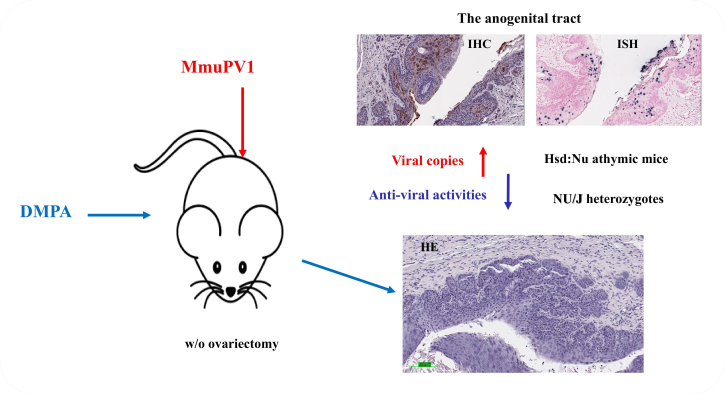
Message from the Editor:
In this study, a mouse papillomavirus (MmuPV1) anogenital infection model was used to test two hypotheses: (1) contraceptives such as DMPA increase the susceptibility of the anogenital tract to viral infection and (2) long-term contraceptive administration induces more advanced disease at the anogenital tract. From the experiment’s results, DMPA promoted initial papillomavirus infections in the lower genital tract, and the chronic administration of DMPA did not promote cancer development in the infected tissues in our mouse model.
“SARS CoV-2 (Delta Variant) Infection Kinetics and Immunopathogenesis in Domestic Cats”
by Miruthula Tamil Selvan, Sachithra Gunasekara, Ping Xiao, Kristen Griffin, Shannon R. Cowan, Sai Narayanan, Akhilesh Ramachandran, Darren E. Hagen, Jerry W. Ritchey, Jennifer M. Rudd et al.
Viruses 2022, 14(6), 1207; https://doi.org/10.3390/v14061207
Available online: https://www.mdpi.com/1999-4915/14/6/1207
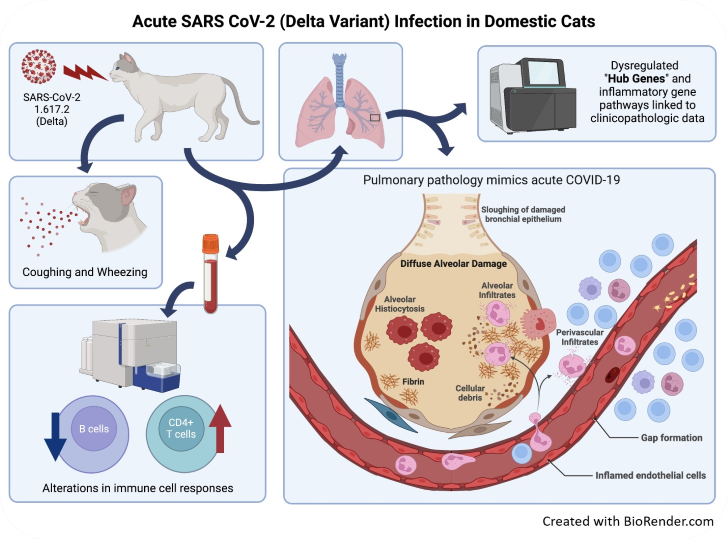
Message from the Editor:
A feline model was established to study COVID-19 disease progression, and this model was utilized to evaluate infection kinetics and immunopathology of the rapidly circulating Delta variant (B.1.617.2) of SARS-CoV-2. From the results, RNA sequencing of infected feline lung tissues identified upregulation of multiple gene pathways associated with cytokine–receptor interactions, chemokine signaling, and viral protein–cytokine interactions during acute infection with SARS-CoV-2. Weighted correlation network analysis (WGCNA) of differentially expressed genes identified several distinct clusters of dysregulated hub genes that are significantly correlated with both clinical signs and lesions during acute infection.
“Origins and Evolution of Seasonal Human Coronaviruses”
by James R. Otieno, Joshua L. Cherry, David J. Spiro, Martha I. Nelson and Nídia S. Trovão
Viruses 2022, 14(7), 1551; https://doi.org/10.3390/v14071551
Available online: https://www.mdpi.com/1999-4915/14/7/1551
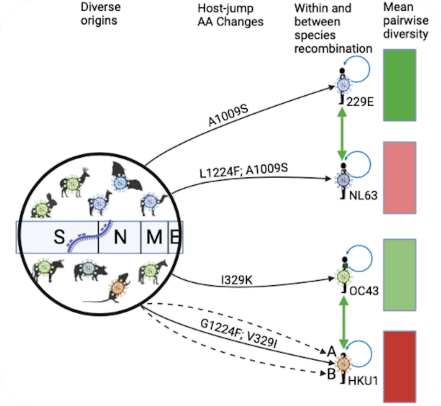
Message from the Editor:
In this study, the evolutionary histories of seasonal human coronaviruses (sHCoVs) were found to be highly complex, owing to the frequent recombination of CoVs, including within and between sHCoVs, and uncertain, due to the under sampling of non-human viruses. The recombination rate was highest for 229E and OC43, whereas substitutions per recombination event were highest in NL63 and HKU1. Additionally, OC43 may have ungulate, canine, or rabbit CoV ancestors, while 229E may have origins in bat, camel, or unsampled intermediate hosts, depending on the gene studied.
“Increased Polymerase Activity of Zoonotic H7N9 Allows Partial Escape from MxA”
by Philipp P. Petric, Jacqueline King, Laura Graf, Anne Pohlmann, Martin Beer and Martin Schwemmle
Viruses 2022, 14(11), 2331; https://doi.org/10.3390/v14112331
Available online: https://www.mdpi.com/1999-4915/14/11/2331
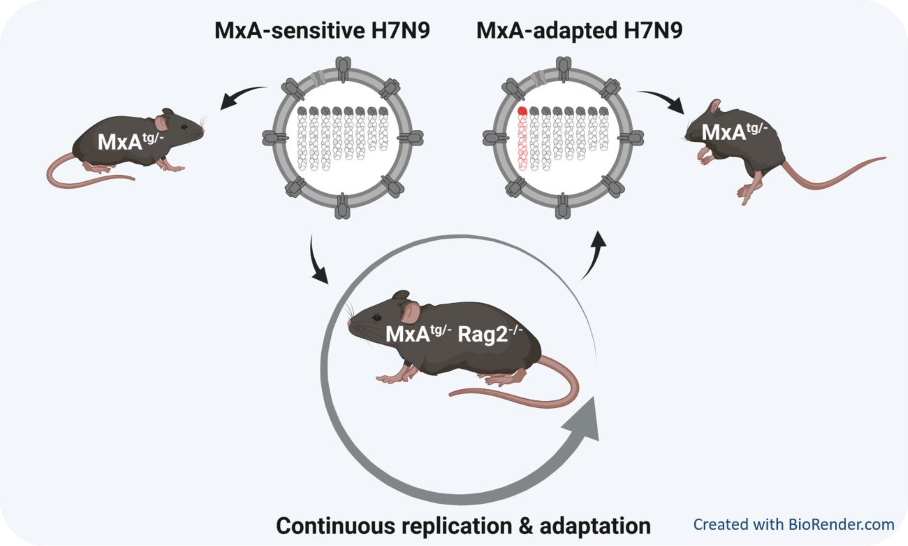
Message from the Editor:
The objective of this study was to determine whether the H7N9 can adapt to escape MxA-mediated restriction. From the results, it showed that viral polymerase activity-enhancing mutations can partially overcome the antiviral activity of MxA against zoonotic H7N9. However, in patients and in an experimental infection model, no true MxA escape mutations were detected, suggesting that, fortunately, MxA still seems to pose a high human species barrier for H7N9.
“SIV Infection Regulates Compartmentalization of Circulating Blood Plasma miRNAs within Extracellular Vesicles (EVs) and Extracellular Condensates (ECs) and Decreases EV-Associated miRNA-128“
by Steven Kopcho, Marina McDew‑White, Wasifa Naushad, Mahesh Mohan and Chioma M. Okeoma
Viruses 2023, 15(3), 622; https://doi.org/10.3390/v15030622
Available online: https://www.mdpi.com/1999-4915/15/3/622
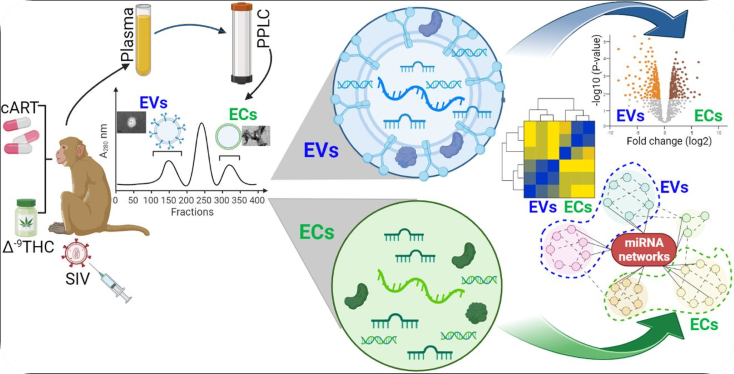
Message from the Editor:
This study aimed to (i) investigate the abundance and compartmentalization of exmiRNAs in EVs versus ECs in the healthy uninfected state and (ii) evaluate how SIV infection may affect exmiRNA abundance and compartmentalization in these particles. The data showed that SIV infection altered the profile of the miRNAome of EVs and revealed that miR-128-3p may be a potential target of HIV/SIV. The significant decrease in miR-128-3p in HIV-infected humans and in SIV-infected RMs may indicate disease progression.

